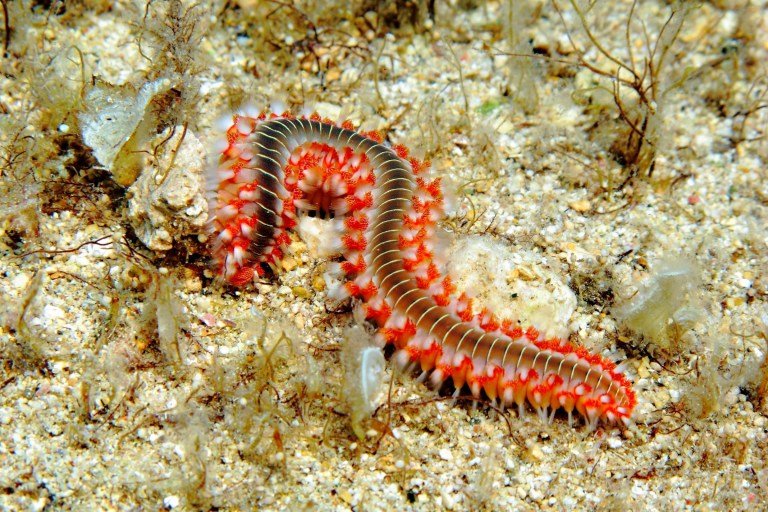
Now, let’s get into what you need to effectively manage these creatures without ending up in discomfort. We’ll explore the best types of gloves, gear for proper handling, and some handy tips to keep in mind. It’s not just about avoiding that sting; it’s about making sure you can do your job effectively and safely.
Why Protection Is Essential
Handling bristle worms without protection is like trying to pet a porcupine: it’s a risky move! These worms have tiny bristles that can easily break off and embed into your skin, leading to irritation and sometimes allergic reactions. That’s why investing in the right gloves is crucial.
You’ll want to look for gloves that provide both comfort and durability. Think of it like choosing a good pair of running shoes; they need to fit well and provide support. The right gloves allow you to move your hands freely while still protecting you from those prickly bristles.
Many folks might overlook the importance of gear, thinking it’s just extra weight or cost. But trust me, having the right gear not only saves you from pain but also makes handling these critters a breeze.
Types of Gloves to Consider
When choosing gloves for handling bristle worms, there are several types that stand out:
- Rubber Gloves: These are a popular choice due to their flexibility and resistance to moisture. They offer a good barrier against stings while still allowing you to feel what you’re doing.
- Leather Gloves: If you’re looking for something more rugged, leather gloves are an excellent option. They provide excellent protection against bristles and are durable enough for outdoor use.
- Nitrile Gloves: Perfect for those with latex allergies, nitrile gloves are strong and provide a snug fit. They’re great for detailed work where you need to retain dexterity.
Choosing the right type depends on your comfort level and the tasks at hand. If you’re planning to do some heavy-duty cleaning, leather gloves might be best. But if it’s just some light handling, rubber or nitrile could suffice.
Recommended Brands for Gloves
Now that you know what types of gloves to look for, let’s talk brands. Here are a few that have earned a solid reputation in the market:
- Mechanix Wear: Known for their durability, Mechanix gloves provide excellent grip and protection. They come in various styles, so you can find the perfect fit.
- Gardena: This brand offers great gardening gloves that are both comfortable and protective. They’re specifically designed for handling plants, making them a good choice for bristle worms.
- Amazer: Their nitrile gloves are highly rated for being lightweight yet protective. They’re a great option when you need to maintain sensitivity while working.
When picking a brand, check reviews and see what others say about their experiences. It’s all about finding that sweet spot between protection and comfort.
Other Gear You Might Need
Aside from gloves, there are other tools that can help you handle bristle worms more safely and effectively:
- Long Tweezers: These allow you to pick up bristle worms from a distance, minimizing the risk of getting stung.
- Protective Eyewear: If you’re working in an area where the worms might scatter, a pair of safety goggles can protect your eyes from any stray bristles.
- Aprons or Overalls: Wearing protective clothing ensures that if you happen to touch a worm, you’re not getting stung on bare skin.
These accessories will enhance your ability to deal with bristle worms while keeping you safe. It’s like wearing a seatbelt—just a smart move all around.
Tips for Safe Handling
Even with the best gloves and gear, there are a few tips to keep in mind when handling bristle worms:
- Work Slowly: Rushing can lead to mistakes. Take your time to avoid overwhelming any worms and yourself.
- Know Your Worms: Familiarize yourself with the environment where these worms live. Understanding their behavior will help you handle them better.
- Have a Plan: Before you start, know what you’re going to do with the worms—whether moving them or cleaning up. This way, you avoid unnecessary handling.
Handling bristle worms can be a slippery slope, but with the right precautions and gear, you can navigate this task like a pro.
How to Choose the Right Gloves for You
Choosing gloves isn’t just about picking the first pair you see; it’s about finding what works for you. Here are a few questions to consider:
- What’s the task at hand? If it’s more than just handling, like cleaning or maintenance, go for heavier-duty options.
- How sensitive do you need to be? If you’re doing detailed work, you might prioritize feeling over sheer protection.
- Do you have allergies? If so, avoid latex gloves and opt for nitrile or other alternatives.
Try on different types and brands to see what feels right. Your comfort will make the task easier and more enjoyable.
Handling bristle worms doesn’t have to be a daunting task. Armed with the right gloves and gear, you can approach these creatures safely. Remember, the goal is to protect yourself while effectively managing your environment—whether it’s a tank or a garden.
So, consider your options carefully. Invest a bit of time into finding the best gloves for you. It’ll pay off in the long run, keeping your hands safe and making the task less stressful. With a little preparation, you’ll be a pro at handling bristle worms in no time!

